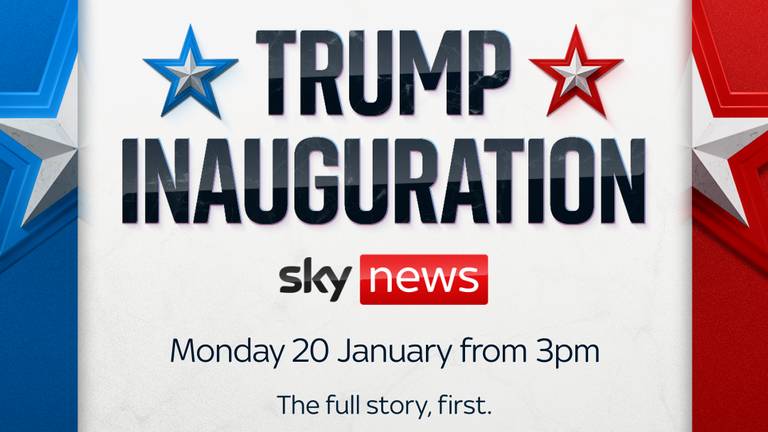Anticipating Donald Trump’s Second Term as President: What to Expect | US News
When asked last week whether “shock and awe” would accurately describe the upcoming days and weeks, Steve Bannon, former chief strategist for Donald Trump, provided a contrasting metaphor, foreseeing “days of thunder”.
The forthcoming second term of Donald Trump promises to be unlike any other in contemporary history due to his unique persona as a president.
His distinctive character, approach, priorities, and methods set him apart, further enhanced by the insights gained during his previous term which he can leverage moving forward.
The four-year hiatus provided him the opportunity to address his past missteps while assembling a skilled team committed to a long-term strategy aimed at fulfilling his objective of “making America great again”.
Several months ago, I had a discussion over lunch with a high-ranking Trump advisor regarding what might characterize his second term.
At that time, prior to Joe Biden‘s departure and amidst two assassination attempts, Trump’s victory seemed uncertain. However, that perception changed over time.
The advisor envisioned a pivotal moment, which is now upon us: Inauguration Day.
He mentioned that Mr. Trump would likely sign numerous executive orders on that very day—possibly even several on the Capitol balcony itself.
This act would symbolize a dramatic shift; the electorate voted for transformation, and with the stroke of a presidential Sharpie pen, that transformation would commence.
The moment has finally arrived. The changing weather has altered many plans, perhaps enhancing the overall spectacle of the occasion.
In a departure from tradition, Mr. Trump is set to address a crowd of 20,000 at the Capital One sports arena after the inaugural ceremony. Could this be an ideal setting to begin signing the executive orders?
Upon his first inauguration in January 2017, Mr. Trump signed only one presidential order. This time, his team suggests he may sign up to 100 orders.
While not all will be finalized on day one, a significant number are anticipated in a consolidated effort to assert his authority while astonishing critics.
Earlier this month, a spokesperson for Mr. Trump stated: “President-elect Donald Trump is gearing up for over 100 executive orders on his first day in the new White House, marking what can be termed a shock and awe initiative focusing on border security, deportations, and a flurry of additional policy priorities.”
His future press secretary, Karoline Leavitt, remarked: “He will wield the power of his pen to fulfill many promises made to the American public during the campaign… the American citizens will be satisfied with his actions from the very first moments in the Oval Office.”
So, what can we anticipate?
Immigration
Transformations in America’s immigration policy are anticipated to be significant and controversial.
“Mass deportations” have been promised multiple times, and Mr. Trump has assembled a team of advisors with strong anti-immigration views.
“On my first day back in the White House, I’ll eliminate every open borders initiative from the Biden administration and initiate the largest deportation campaign in American history,” Mr. Trump declared at a campaign rally last year.
Undocumented migrants will become the primary target, with an estimated 11 million individuals currently in this situation within the United States.
There are suggestions that the military could assist in the operations to detain undocumented migrants in cities nationwide, including those who have spent years in the US awaiting a change in their immigration status.
Many of these undocumented individuals have children born in the US, thus making them citizens.
Additionally, Mr. Trump has suggested prohibiting birthright citizenship, a right established by the 14th Amendment of the US Constitution.
The full scope and enforceability of these proposed policies remain uncertain. Will the focus be solely on migrants with criminal records, or will a broader net be cast?
“On my first day, I will initiate the largest deportation operation in American history to remove criminals,” Mr. Trump asserted in October. “I will rescue every city and town that has been invaded and conquered, incarcerate these vicious criminals, and expeditiously remove them from the country.”
Mr. Trump’s immigration strategies are likely to face substantial legal challenges. However, anticipate his White House to prioritize highly visible actions early on to convey a serious commitment.
Energy
The slogan “Drill, baby, drill” was met with applause during Donald Trump’s campaign rallies. In line with this promise, Mr. Trump is predicted to direct federal agencies to begin reversing the drilling restrictions imposed by President Biden on federal land and offshore.
Additionally, he is expected to advocate for the relaxation of vehicle emissions standards, which he has labeled an “EV (electric vehicle) mandate”, and to renew approvals for facilities that export US natural gas.
Furthermore, expect him to withdraw again from the Paris Climate Agreement, from which President Biden had rejoined after Trump’s initial exit during his first term.
This strategy aligns with Trump’s vision for America’s “energy dominance”.
January 6 Pardons
Throughout the election campaign, Mr. Trump has frequently indicated an intention to pardon individuals convicted related to the January 6, 2021, attack on the US Capitol, aimed at obstructing the ratification of the 2020 election.
In December, he mentioned to Time Magazine: “I’ll be examining J6 early on, perhaps within the first nine minutes.”
Trade and Tariffs
This issue is causing considerable concern worldwide, and for justifiable reasons. It is a key factor prompting world leaders to tread cautiously in their remarks about the new president.
Weeks following his election, Mr. Trump proposed enacting an executive order to impose a 25% tariff on goods imported from Mexico and Canada, significant trading partners of the US.
Mr. Trump has made previous pledges regarding 10% tariffs universally, yet his comments in November regarding Mexico and Canada extended further. During his campaign, he asserted tariffs were “the most beautiful word in the English lexicon”.
It is believed he will utilize tariffs as leverage to compel other nations to adhere to his demands.
“On January 20th, as one of my many first executive actions, I will sign documents to impose a 25% tariff on ALL goods coming into the United States from Mexico and Canada,” he declared in November.
“This tariff will remain in place until drugs, especially fentanyl, and all illegal immigrants cease this incursion into our country! Both Mexico and Canada hold the authority and capability to resolve this ongoing issue. We demand that they take action; until then, they must face significant consequences!”
The potential of onerous tariffs on imports could disrupt the global economy and supply chains, while likely causing price increases in the US, thereby conflicting with Mr. Trump’s promise to reduce costs for average Americans. Thus, observe how well the proposed actions correspond with the rhetoric.
A War on Woke
During campaign events, Mr. Trump consistently vowed to eradicate what he termed “woke ideology” from America.
Federal education policies will be a focal point, especially targeting the Department of Education.
Mr. Trump has expressed intentions to cut federal funding for educational institutions promoting critical race theory, transgender policies, or any inappropriate racial, sexual, or political content being imposed on students.
Furthermore, he’s expected to overturn the Biden administration’s Title IX provisions that permitted transgender students to use bathrooms corresponding with their gender identity.
Ukraine
While he has moderated his earlier pledge to “end the war in 24 hours”, Mr. Trump continues to assert intentions to swiftly resolve the ongoing conflict in Ukraine. The critical consideration remains how he plans to achieve this and the potential gains it could afford Russian President Vladimir Putin.
In the past year, incoming Vice President JD Vance detailed what he perceives as a pathway forward. “It likely involves establishing a demilitarized zone along the existing border between Russia and Ukraine,” Vance articulated on the Shawn Ryan podcast.
Mr. Trump’s foreign policy aims for prompt results. While this might produce favorable outcomes during his presidency, it raises questions on the implications it sends to adversarial nations. Mr. Putin, unrestricted by term limits, would benefit from a welcome entrustment to regroup and rearm.
Rhetoric vs. Reality?
This overview does not encompass all of Mr. Trump’s campaign commitments that have propelled him back to the White House.
The pivotal concern lies in the degree to which his pronounced statements align with tangible actions. Ultimately, it is upon his actions, rather than his words, that his presidency will be evaluated.
Among those who supported Donald Trump’s second term, some did so due to an unwavering belief in his most controversial policies—advocating for comprehensive changes.
Read more:
Melania Trump – making her own rules
Why the UK must work with Trump
Meet The Trump family
Nevertheless, numerous voters supported him due to a preference for his style (and dissatisfaction with opposing views), yet they are skeptical about his commitment to extreme policies.
Common sentiment encountered on the campaign trail was, “He’s not actually going to do that.”
The forthcoming hours, days, months, and years will reveal how closely reality aligns with rhetoric and precisely what these “days of thunder” will entail.
One certainty remains: we are entering a season of profound significance.










